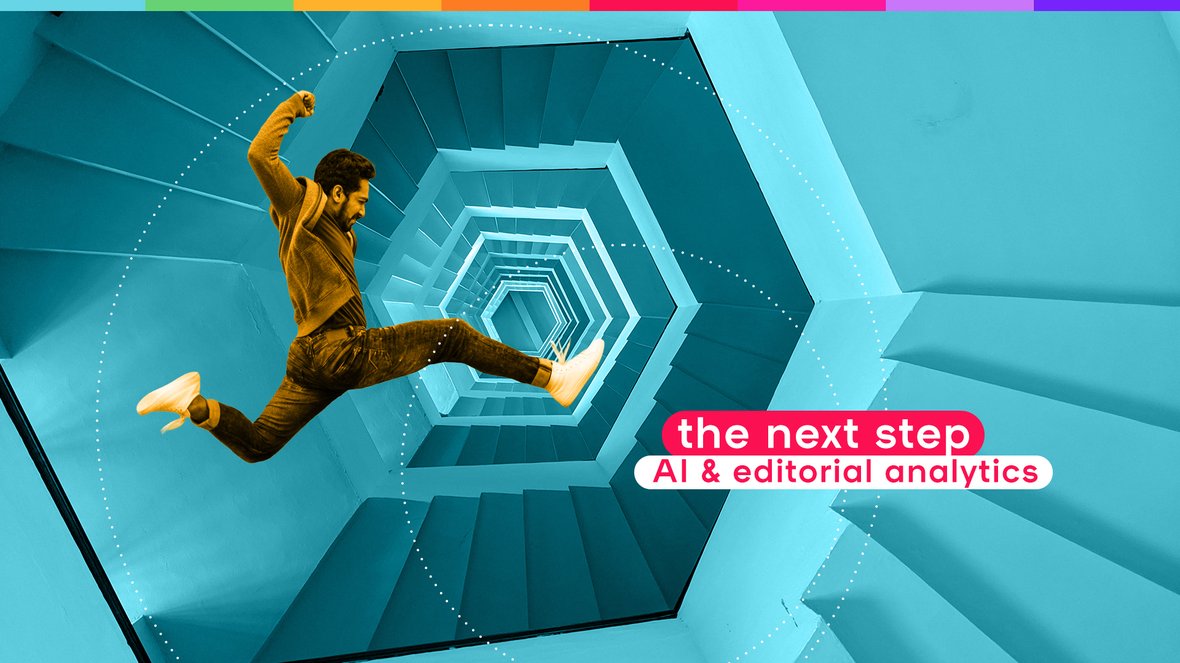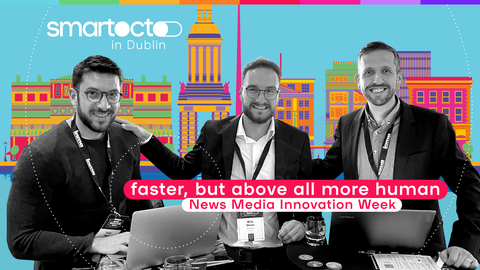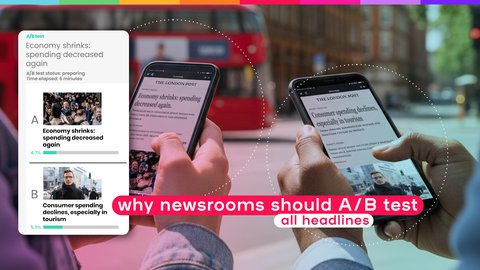While many media organisations are rightly preoccupied with the pressure artificial intelligence puts on their creative control and distribution strategies, data tools are quietly moving in a different direction: translating dashboards into messages that aid real decision making. This is the focus of smartoctober this year.
AI & editorial analytics: the next step
Oct. 2, 2025 by Stefan ten Teije, Em Kuntze

Smartoctober is our annual deep dive into something that’s timely and important for our news media community and industry. This year we’re pulling focus around the ideas - and issues - raised by AI. We have our own take on what this means - and where the opportunities lie (and we’re even working on a new product to help you with that).
Make sure you’re following us on LinkedIn, where we’ll be posting on the subject, keep an eye on the blog for updates, and sign up for the webinar (soon to be announced). And, if you’re not already receiving our newsletter, subscribe here. That way you won’t miss a jot.
Newsrooms and creatives are, understandably, concerned about the negative impact AI may have on existing and accepted workflows. However, for Erik van Heeswijk, smartocto’s CEO, the potential of AI (and how it combines with editorial analytics) comes down to its ability to power effective decision making.
We always had the vision that the system should talk to you as if it were a colleague, but it is only now that LLMs (Large Language Models) have become so powerful that they are truly within our reach. We want to present messages that take over part of the data interpretation and are also actionable.

Erik van Heeswijk CEO @ smartocto
This is our vision for your newsroom’s better future.
Smartocto’s vision: an AI-powered assistant
Imagine having an assistant in your newsroom whose job at the end of your eight hour shift is to compile a written report on the most important events and changes - all of which have been revealed by tracking and analysing your data.
Imagine they place that report on your desk - well-organised into smaller chapters, with an introduction, conclusion, and recommendations.
Imagine that this assistant attends your editorial meetings, understands your editorial policy, and works with you to formulate the most important questions you seek to answer through your data.
In other words, your assistant's job is to monitor all changes in your data, the visualisations on your dashboards, conduct statistical data analyses, distinguish the important from the irrelevant, record the most significant trends and changes, and deliver all of that to you in a timely manner - without getting too technical.
This is how AI might integrate into your newsroom
This autumn, smartocto is introducing a new feature. It’s an automated, AI-powered assistant that will help newsrooms just like yours do their work more efficiently - and more effectively.
Like all the great editorial analytics systems, smartocto can already propose headlines, generated from a combination of data analysis and an LLM. The editor remains the one to decide whether each system-generated suggestion merits an A/B (split) test. AI can also help categorise news and propose angles that address different user needs.
At this stage, most newsrooms use AI - to paraphrase the anthropologist Andrew Lang’s witticism - only as a drunk uses a lampost: for support, rather than illumination.
But what we’re developing will offer something more.
Data about engagement, loyalty and reach is commonplace, but this AI-assistant will tell you what’s happened and give you suggestions about how to improve - and guidance as to how to actually action those suggestions.
It will illuminate opportunities for growth and identify the most efficient ways to get there.
Interpreting reports and dashboards takes a lot of time. Ultimately, people always think in language, and organise thoughts in stories. Accordingly, our new AI solution will become your in-house data storyteller. What is important? What isn’t? Each new shift of editors can potentially go through these questions and answers and see where their attention is needed.

Goran S. Milovanovic Chief Artificial Intelligence Officer
Which sections gained loyal readers week-over-week?
Answer (example):
Several sections saw notable increases in loyal readers this week. Local sports experienced the most dramatic gain, adding 242 readers. Local elections also showed strong growth with 180 more readers. What’s on (+69), Business news (+34), and Travel (+29) sections all saw modest increases. Other sections with slight improvements include Lifestyle, the City Centre Bulletin, and Local Icons. However, some sections faced declines, with Suburban News losing 106 readers and Schools & Education dropping 96. Overall, loyal readership across sections remained relatively stable week-over-week.
Your data storyteller
One of the biggest challenges for companies developing editorial analytics to news media has always been how to communicate technical results to its non-technical user audiences. We have a solution to solve this problem - it won’t answer any question imaginable, but it will give you a source of intelligent suggestions that help you make the best decisions for your newsroom.
How Erik van Heeswijk sees it:
“The future of editorial analytics is about how tech companies can use data as the foundation to make good decisions - from an editorial and business point of view. These should be the notifications that move from insight to action and help you proactively: create more of this type of story on the sports desk, time certain articles to specific parts of the day, or assign author X primarily to topic Y. What we’re developing now will become your newsroom’s secret weapon and your cue to use proven results from the past to fuel future productions and optimise distribution.”
You may also like...
News Media Innovation Week: Faster, but above all more human
At Media Innovation Week in Dublin, one theme stood out: as newsrooms speed up digital change, the challenge is to keep journalism human.

Why newsrooms should A/B test all headlines
Discover how A/B testing headlines with smartocto improves clicks, loyalty and engagement. Practical insights for data-driven newsrooms.
